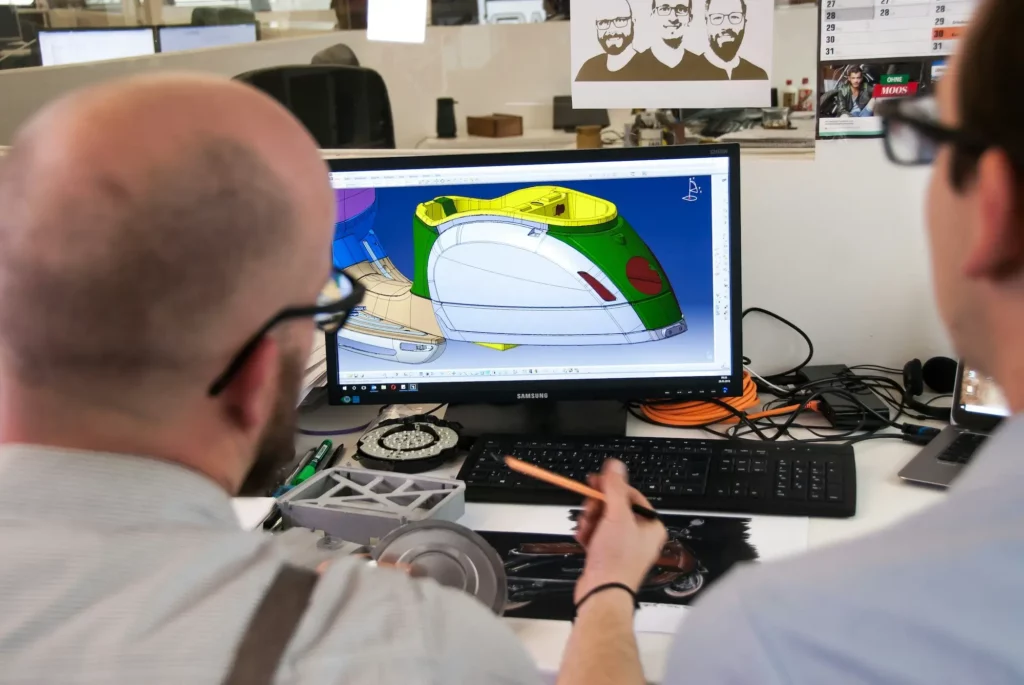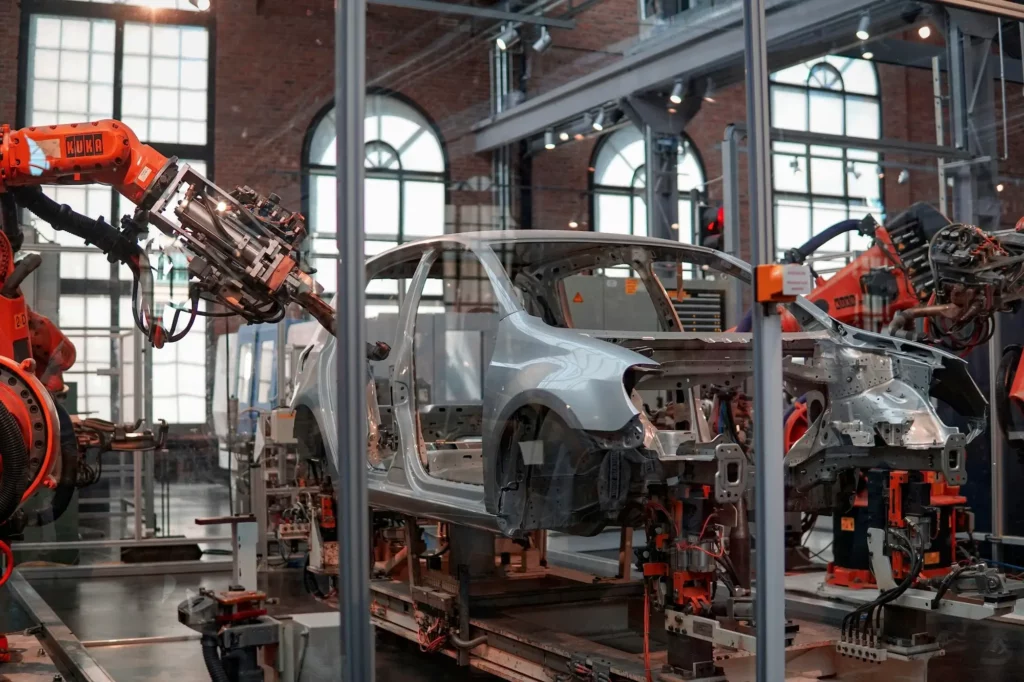Building a new product is exciting, but it also comes with a lot of pressure. Teams often face problems like unclear requirements, last-minute changes, missed details, or delays in testing.
Sometimes, one small mistake in the design can lead to wasted time, extra costs, or even product failure.
That’s why the engineering design review process matters. It helps teams catch problems early, improve communication, and make better decisions at each stage of the design.
In this article, we’ll walk you through what a design review is, who’s involved, what to do before a review, and the common steps in the process.
What is an Engineering Design Review?
An engineering design review is a meeting where the team looks closely at a product design before moving forward. It’s like a checkpoint. Everyone involved in the project comes together to check if the design makes sense and if it’s ready for the next step.
This is not just a quick chat but a formal design review. That means there’s a clear plan, a shared goal, and a record of what was discussed. The goal is to spot problems early and avoid mistakes later.
A good project review focuses on more than just whether the product will work. It looks at how well the CAD or 3D model design fits the goals of the project.
Is the design practical? Can it be built easily? Is it cost-effective? Does it follow best practices? These are all part of a solid technical review.
Streamline your engineering feedback process with live CAD reviews. Get started with CADchat.
Who’s Involved in the Design Review Process?
A design review brings together different people from across the company. Each one has a role in checking the work, asking questions, and helping make the right decisions. Here’s who usually takes part:
- Designer – They explain the design and the goals behind it.
- Product managers – Share the bigger picture and help the team stay on track.
- Mechanical engineering team – They look at how the design will actually work. They check if it’s strong, safe, and ready for production.
- Decision makers – These are the people who approve the next steps. They ask tough questions and make the final call.
- Client (or someone who represents them) – They bring the outside perspective. Their input helps make sure the product design supports real-world needs and expectations.
- Other team members – This can include quality experts, suppliers, or anyone else who can provide feedback and help improve the design.
Each person plays a part in making the review useful. When everyone works together, the team can catch problems early and build something better.
What to Do Before an Engineering Design Review
Before implementing a design review process, it’s important to take a few key steps. These steps help make the review smoother, more focused, and more useful for everyone involved.
Define What Success Looks Like
Start by setting clear goals. What does a successful outcome look like for this design? This gives the team direction.
As the detailed design takes shape, these goals might change. Still, having a clear target from the start helps everyone stay on the same page.
Gather the Right Information
Good reviews start with good preparation. Make sure you collect all the data and background needed to understand the problem fully.
This makes feedback gathering more meaningful. With the right info in hand, the team can look at every angle and find the best path forward.
Set Up a Documentation Process
Don’t skip this step. Keeping track of design changes, meeting notes, and team input matters a lot.
You can do this manually or with software tools, but using scattered spreadsheets can lead to mistakes. Solid documentation helps with traceability and keeps things clear across tools and teams.
Support real-time and async engineering design reviews with CADchat.
11 Common Steps in a Design Review Process
In systems engineering, reviews happen at key points in the project. Below are 11 common steps in a structured design review process. Each step plays a role in moving the system forward.
1. Alternative Concepts Review (ACR)
This is the first review where the team looks at different ideas for solving the main problem. It’s a time to explore creative options without locking anything in.
Using CAD collaboration software, the team shares their design ideas in real time and adds comments directly to the model. The team may spend approximately 20 to 30 minutes explaining each concept, going over strengths, weaknesses, and risks.
After that, there’s time for answering questions. The goal of this meeting is to pick the best ideas to take forward.
2. System Functional Review (SFR)
Once a few concepts are selected, the team checks whether the system design can support the needed capabilities. This feedback review helps confirm if the ideas still match the original goals.
Engineers, product managers, and sometimes clients come together to give input. If something doesn’t align, now is the time to speak up before deeper design work begins.
3. Software Specification Review (SSR)
If the product includes software, this step focuses on defining exactly what that software needs to do.
The team creates a full list of software requirements before any development begins. These requirements must be clear, complete, and agreed upon.
During the feedback review, everyone checks that the software goals make sense and are written in plain language.
This includes how the software will work with hardware, what inputs it needs, and what outputs it will produce.
4. System Design Review (SDR)
This is where the overall system design gets a closer look. The team reviews how the product will meet the project’s technical goals within time and budget limits. It’s also a chance to check if the design is realistic.
The feedback review here looks at both risks and possible gaps. Everyone involved needs to agree that the design is still on the right track.
5. Preliminary Design Review (PDR)
At this stage, the early version of the detailed digital design is shared. The team confirms that the system will be useful and meet the basic operational needs.
The PDR often includes visuals, sketches, or 3D mockups. The team may spend approximately an hour or more explaining the design and answering questions about how it will work.
6. Critical Design Review (CDR)
This is one of the most important checkpoints. The CDR takes a deep look at the full detailed design. It covers every part of the system and checks that the team is ready to move forward with building and testing.
If the design passes this technical review, it means the team is confident that all major problems have been addressed. Expect long sessions with a lot of feedback and discussion.
7. Test Readiness Review (TRR)
Before the product enters formal testing, the team holds the TRR. This review looks at test plans, tools, and timelines. It also checks whether the test team is ready and if the system is safe to test.
A TRR prevents delays and surprises by making sure everyone knows what will happen during testing and what success looks like.
8. Final Design Review (FDR)
At this point, most of the design and test work is complete. The FDR is a last look at everything before moving into full production or delivery.
The team checks that all parts of the design are final and that test results meet the goals. This is the last chance for feedback review before the design is locked in.
9. System Verification Review (SVR)
This review checks whether the product works as expected. It looks at real performance, not just design documents. The team compares the original goals with the final product results.
If everything lines up, the product is verified. If not, the team may need to go back and fix issues before moving forward.
10. Production Readiness Review (PRR)
This review checks whether the system is ready for mass production. It includes factory plans, supply chain details, and cost tracking.
If the product is not ready, the team will delay production until all pieces are in place. This helps avoid mistakes and wasted materials later on.
11. Physical Configuration Audit (PCA)
The final review checks that what was built matches the approved design documents. The PCA makes sure everything is properly documented and labeled.
This step is important for safety, support, and future updates. It also confirms that the final product meets the original documentation and product baseline.
Get design approval 50% faster and keep projects on track. Contact us to learn more
How CADchat Supports Engineering Design Reviews
CADchat makes the design review process smoother, faster, and easier for everyone on the team.
Whether you’re an engineer, a designer, a manufacturer, or someone without technical skills, CADchat gives you the tools to clearly understand, review, and improve CAD models, together or on your own time.
Live Collaboration Without Friction
With live CAD model reviews, teams don’t need to share screens or convert files. Everyone can open the same 3D model and view it together.
You can mark up the model in real time, talk through issues, and finalize changes with real-time editing. This cuts down on back-and-forth emails and saves a lot of time during meetings.
Cloud-Based Collaboration with CADchat
CADchat makes cloud-based CAD collaboration simple for product teams. Whether your team is across the office or across the world, everyone can work together in real time or on their own schedule.
It all happens in the browser, no software to install, and no need to send files back and forth.
Asynchronous Reviews to Keep Work Moving
Not everyone is in the same time zone or available at the same time. That’s why CADchat supports asynchronous collaboration.
You can leave feedback on models at any time. Comments stay linked to the model, so it’s easy to see what needs fixing or updating. This means work doesn’t stop when someone’s offline.
Easy for Non-Technical Team Members
Design reviews often involve people who don’t use CAD tools, like marketers, sales leads, or managers.
CADchat makes it easy for them to view and give feedback without needing any extra software or training. They can see the model, add comments, and stay in the loop.
Digital Workspaces That Keep Everything in One Place
With digital workspaces, nothing gets lost. All versions, comments, and decisions are stored in one shared space.
Everyone can access the latest model and see what was said and done. This helps avoid version control issues and makes handoffs smoother.
Easy for Non-Technical Team Members
Design reviews often involve people who don’t use CAD tools, like marketers, sales leads, or managers.
CADchat makes it easy for them to view and give feedback without needing any extra software or training. They can see the model, add comments, and stay in the loop.
Integrated With Your Workflow
You can set up meetings straight from your browser using Chrome or Edge extensions, and plan sessions using your Google or Outlook calendar. This makes it simple to bring design reviews into your regular workflow without switching tools.
Empower your engineers to work smarter with cloud-based CAD reviews. Try CADchat now.
Start Collaborating Smarter with CADchat
Ready to speed up your design reviews and keep everyone on the same page? CADchat gives your team one place to meet, share models, and give feedback. You can work live or catch up later. No more long email threads or confusing file versions.
Get started in minutes with nothing to download. CADchat works right in your browser and is free to try.
Contact us today and bring your entire team into one clear and connected workspace.
FAQs About the Engineering Design Review Process
What is the engineering review process?
The engineering review process is a structured way for engineering teams and project managers to check if the design meets the project’s goals.
It includes a series of formal reviews, like a preliminary design review, a critical design review, and a final design review.
This process helps the team spot issues early, gather feedback, and make necessary changes before moving to the next phase of the project.
What are the 7 steps of the engineering design process?
The engineering design process usually includes identifying the problem, researching, coming up with ideas, picking the best one, creating a prototype, testing it, and improving it.
Each step is meant to guide the design team through planning, developing, testing, and finalizing a solution that fits the needs of the intended user and meets success criteria.
How to do an engineering design review?
To do an engineering design review, the design team holds a meeting with engineers, product managers, and subject matter experts. The designer shares a brief overview of the concept, technical details, and current state.
Participants share feedback, ask questions, and evaluate if the design meets key performance indicators and business value.
A structured agenda, open discussion, and documented meeting minutes help guide decisions.
What is the design review process?
The design review process is a series of formal reviews at various stages of product development.
These include preliminary design review, critical design review, and final design review, and sometimes others like test readiness review or production readiness review.
In each review, product managers discuss the status, engineers go over technical details, and the team checks if the design aligns with the design process, specific criteria, and business goals.


